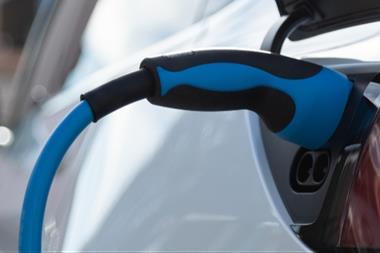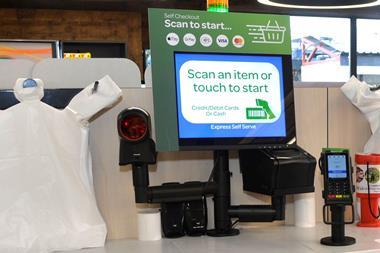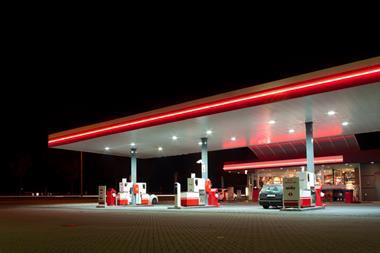Many signs of these times
Do you have a No Smoking sign on your door? I expect most of you do. However Jay Patel, who runs a small kiosk-style forecourt site in north-east London, objects to the amount of clutter he has to stick in his windows and doors and would like to remove the sign along with a fair few others.
He has a point. By the time you have put up the list of cards you accept, the warning that the premises are protected by CCTV, that guide dogs are welcome, what your hours of trading are and signs to the fact that it is an offence for anyone under the age ofand ID is requiredwell, there’s little room left to let the light in. On top of this you may want to point out hearing loops available, no food or drink allowed on the premises, only two schoolkids at a time. It is extensive, much like the red tape that introduced it all in the first place. It also looks messy at the best of times and gets tatty very quickly. On a small store it looks even worse and adds to the ’can’t see the woods from the trees’ effect.
Jay, who is in the process of smartening up his premises, asks: "Doesn’t everyone know by now that they can’t smoke in the shop?"
You would think so, particularly in regard to the numero uno inflammable product on forecourts. But rules is rules and just recently a Nottinghamshire shopkeeper was tackled by his council for not putting a No Smoking sign on his gift shop door. First an enforcement officer issued a £500 on-the-spot fine and then the Labour-run authority pursued him through the courts. He fought back and fortunately magistrates threw the case out (after the waste of quite a bit of public money).
The getting-on-for-three-years-old rules say that all stores, public buildings and even churches must display A5 (8.3in x 5.8in) No Smoking signs at every entrance, in a prominent position. A concession here you can design and print your own sign if you like.
I wandered down a high street yesterday which houses a good number of independent shops to check on the universal observation, or lack of, this rule. The jewellery stores didn’t have the sign, nor, funnily enough, the chemist and the newly-styled old-fashioned sweetie shop wasn’t spoiling any of its Georgian-style windows with signs of any sort.
But, as I said to Jay, you take your chances with local councils. You could always keep a few signs under the counter just in case and put them up as and when required. I’m all in favour of a little anarchy and a little less uniformity on shop doors. And yes, of course, everyone knows by now that you can’t smoke in shops.
Fuelling lots of comment
As some of you will know, I’ve been trying to widen discussion in this column about the future of forecourts vis-à-vis biofuels and alternative cars. It’s your future guys! It takes me trawling websites which sometimes pitch up other interesting stuff. One of my friends on Facebook, Hasmuckhlal Sodha, a forecourt worker for Murco in Leicester, has a ’Paying too much for petrol? Here’s the plan’ link to a website devoted to gathering signatures and directing members to boycott Esso and BP.
It’s both an entertaining and frustrating site because, as ever, a big chunk of the public just doesn’t get the structure of the oil industry. I suppose this makes some sort of sense. We (the rest of us) probably don’t understand the many tiers involved in, say, the structure of Whitehall (in view of recent events this is the first example that sprang to mind).
This paying-too-much-for-petrol site has some 146,192 members at the moment. It attracts a lot of comment.
An example of interest: "I bought a secondhand lpg conversion for £100 on eBay and fitted it to my Saab. Total cost with new copper pipe and a few bits for fitting and petrol to Manchester and back to collect it was £150. Now I’m paying 63p a litre."
An example of seriously uninformed: "Where I live Esso is the cheapest around, even cheaper than that crap supermarket fuel that I will not put in my car." (I wonder where she thinks the supermarkets get their fuel?)
There are a few gems. One said: "I water my petrol down. One litre of petrol to half litre of vegetable oil and half litre of waterworks completely fine."
He doesn’t say what he drives!
Even better, I liked a response to this. "Bet it tastes good too."
But best of all was a comment posted the day I started to write this: "With all the bulls**t all the governments come out with, we all could run our cars on it for years for next to nothing!"
Is the trial going flat?
Cenex, the Centre of Excellence for low-carbon vehicle technologies, has concluded that almost all drivers in its six-month trial involving 264 electric cars experienced "range anxiety".
In other words they were very cautious about taking the cars for long runs to avoid having to recharge en route. They tended to avoid using the car even if the battery indicator was only just dipping under 50%.
Theoretically cars such as the Mitsubishi i-MiEV can travel 100 miles between charges but drivers did not trust the official figures.
The batteries still take at least six hours to recharge and Britain still has only around 300 public charging points, mostly in London.
I guess one day you will have to invest in charging points, but not quite yet.






























No comments yet